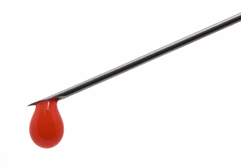 An interesting report from Kevitt and Hayes of Corporate Health Ireland and the Occupational Health Department of Beaumont Hospital, Dublin, respectively.
An interesting report from Kevitt and Hayes of Corporate Health Ireland and the Occupational Health Department of Beaumont Hospital, Dublin, respectively.
BACKGROUND: Sharps injuries create a high volume of occupational health (OH) workload in the health care setting. The deadline for implementation of the European Sharps Directive was 11 May 2013.
AIMS: To compare the epidemiology of sharps injuries reported in a large Irish teaching hospital in 2008-10 with those reported between 1998 and 2000.
METHODS: We compared data from electronic and paper OH records of sharps injuries reported between 1 January 2008 and 31 December 2010 with those from a previous study of sharps injuries reported between 1 January 1998 and 31 December 2000.
RESULTS: A total of 325 sharps injuries were reported in 2008-10, compared with 332 in 1998-2000 (P = 0.568). Hepatitis B immunity in sharps injury recipients in 2008-10 was 87% compared to 86% in 1998-2000 (P = 0.32). Glove use was reported in 80% of reported injuries in 2008-10 compared with 74% in 1998-2000 (P = 0.32). In 2008-10, 49% of injuries occurred during disposal or following improper disposal of sharps, compared with 42% in 1998-2000.
CONCLUSIONS: There was no significant change in the epidemiology of sharps injuries reported between 2008 and 2010 compared with 1998-2000. Further education in standard precautions, safe disposal of sharps, the use of safety-engineered devices and the benefits of hepatitis B immunization is needed.
Kevitt F, Hayes B. Sharps injuries in a teaching hospital: changes over a decade. Occupational Medicine (2015) in the press
The data may be confounded by changes in reporting policy and practice, and indeed by many other factors beyond the introduction of safety-engineered sharps safety devices. This suggests however that sharps use remains highly risk-prone and that the hazard cannot be dismissed even when safety sharps are used. The question is, does the European Sharps Directive make a difference? Looking at these data it is easy to say that ‘No, it doesn’t’. But that would be a considerable oversimplification of the data from Dublin. Similar findings, of no significant reduction for blood and body fluid exposures over a 10 year period, this time from Washington, DC paint a similar and rather depressing picture.
Treakle, AM, Schultz M, Giannakos GP, et al. Evaluating a Decade of Exposures to Blood and Body Fluids in an Inner-City Teaching Hospital. Infection Control and Hospital Epidemiology, 2001; 32/9: 903-907
The message in both cases is that of an on-going and critical need for sharps safety and related training, reinforcement of that training at regular intervals, and periodic audit to ensure compliance in all user groups. Though outside the scope of both papers, it is interesting that waste handlers managing waste from the hospitals were not considered. To what extent housekeeping staff, cleaners and porters, particularly if these services were out-sourced, had been considered is not clear. Where they were included in the statistics presented, the possibility of variation in reporting rates are not evaluated.
